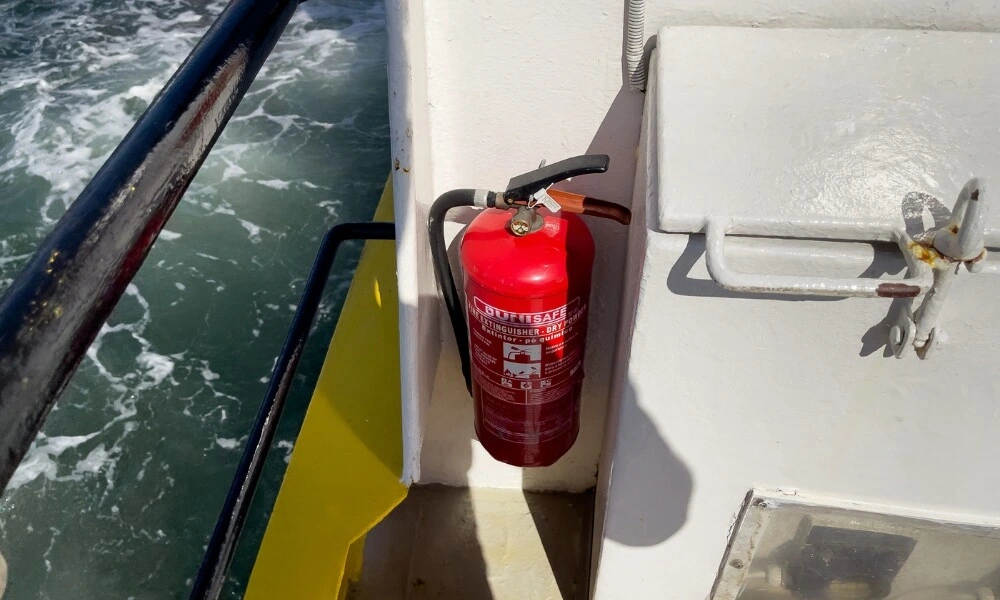Navigating the open waters can be an exhilarating experience, offering a unique blend of freedom and adventure. However, with this freedom comes the responsibility of always ensuring safety. One of the often overlooked but critical components of maritime safety is fire prevention and control. While the idea of fire might seem counterintuitive on a vessel surrounded by water, the reality is that boats present a unique set of fire hazards.
This blog dives deep into understanding the importance of fire extinguishers on boats, decoding the requirements based on various factors, and emphasizing the need for proactive measures to ensure fire safety at sea. Whether you’re a seasoned sailor or just starting your maritime journey, this guide offers essential insights to keep you, your passengers, and your vessel safe.
Why are Fire Extinguishers Important on a Boat?
Like any other vehicle or structure, boats are not immune to fire risks. Having fire extinguishers on board is more than just a legal or regulatory requirement; it’s a fundamental safety measure. Here’s an expanded explanation of their importance:
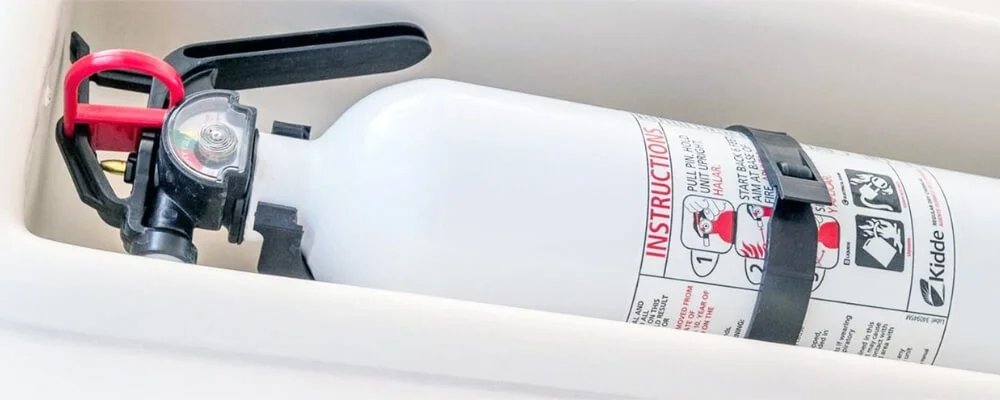
1. Potential Fire Sources
- Engines: Boat engines, especially those that run on gasoline, can be a significant fire risk. The hot surfaces of the engine can ignite fuel or oil spills.
- Fuel: Fueling mishaps can cause spills, which, if not cleaned up immediately, can become a fire hazard, especially in the presence of an open flame or spark.
- Cooking Appliances: Many boats are equipped with kitchens, and cooking is a frequent activity on board. Any misadventure during cooking, such as oil spillage, can quickly lead to a fire.
- Electrical Systems: Faulty wiring, overloaded circuits, or using non-marine-grade equipment can result in electrical fires.
2. Limited Escape Options
- Isolation from Help: If a fire breaks out on land, one can often rely on the quick response of local fire departments. On water, this assistance might not arrive quickly, making self-reliance crucial.
- Swimming Risks: While abandoning a ship might seem obvious during a fire, open waters can be treacherous, with currents, temperature, and potential marine predators posing additional risks.
- Life Raft Limitations: Even if a boat is equipped with life rafts, there might be limitations to how many people they can accommodate. Plus, deploying life rafts under stressful situations can be challenging.
3. Environmental Safety
- Water Contamination: Oil and fuel leaks due to a fire can be disastrous for marine ecosystems, impacting flora and fauna.
- Debris: Parts of the boat or items on board that get destroyed during a fire can float away, contributing to water pollution.
4. Asset Protection
- Investment Value: Boats are often significant investments. A fire can lead to total vessel loss, causing significant financial strain.
- Equipment Loss: Many boats carry equipment ranging from fishing gear to advanced navigation systems. Fires can lead to the loss of these valuable items.
5. Regulatory Compliance and Legal Implications
- Mandatory Requirement: In many jurisdictions, carrying a fire extinguisher is a legal requirement. Having one can lead to penalties or disqualification from using the boat.
- Insurance: Some insurance companies may refuse claims or terminate policies if it’s found that the boat wasn’t equipped with necessary safety equipment like fire extinguishers.
6. Passenger Safety and Peace of Mind
- Preparedness: A fire extinguisher on board ensures an immediate response mechanism in an emergency. This preparedness can prevent minor incidents from turning catastrophic.
- Training and Drills: The presence of fire extinguishers can also promote discussions and drills around fire safety, ensuring everyone on board is educated about potential risks and response strategies.
In conclusion, fire extinguishers on a boat are not just tools but essential components of a broader safety and preparedness mindset. Proper placement, maintenance, and regular checks ensure they remain effective and provide peace of mind for everyone on board.
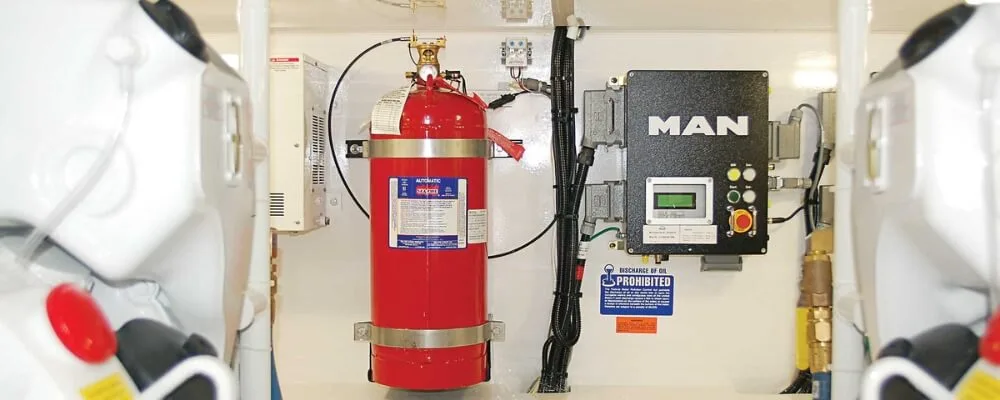
Types of Fire Extinguishers for Boats
Fire extinguishers are a crucial piece of safety equipment on any vessel. Different classes of extinguishers may be recommended or required depending on the boat’s size, type, and usage. Here’s a detailed breakdown:
Class B Fire Extinguishers
- Primary Purpose: Class B fire extinguishers are specifically designed to combat fires stemming from flammable liquids, which are prevalent on boats. Whether it’s the fuel in the boat’s tank or oils used in cooking on board, Class B extinguishers are vital in controlling and extinguishing such blazes.
- How They Work: These extinguishers typically use a foam or dry chemical agent to smother the fire, creating a barrier between the oxygen and the fuel source, thereby starving the fire of its essential sustenance.
- Capacity Indicators: The numbers associated with these extinguishers guide their capacity. A B-I extinguisher has a smaller volume of extinguishing agent than a B-II. Choosing the size is important based on the boat’s potential fire risks and size. A general guideline is that larger vessels or those with more complex systems would benefit from having a larger capacity (B-II) extinguisher.
Other Classes
Class A Fire Extinguishers
- Primary Purpose: Class A extinguishers are designed to combat fires involving common combustible materials such as wood, paper, fabric, and some types of plastic. A Class A extinguisher becomes essential if a boat has many wooden components or is primarily wooden.
- How They Work: These extinguishers cool and saturate the burning materials using water or foam. The fire is extinguished by reducing the material’s temperature below its ignition point.
Class C Fire Extinguishers
- Primary Purpose: Boats, especially larger or more sophisticated ones, often have complex electrical systems. A Class C extinguisher is designed specifically for fires stemming from energized electrical equipment.
- How They Work: They often use non-conductive extinguishing agents like dry chemicals, ensuring the user isn’t at risk of electric shock. It’s essential to remember that using water on an electrical fire can be hazardous.
Combination Extinguishers
Many modern fire extinguishers are designed as multipurpose tools capable of tackling various types of fires. These might be labelled as AB, BC, or even ABC, indicating they’re suitable for fires of those respective classes. Such extinguishers provide a broader range of protection, especially for boats facing multiple fire risks.
While selecting a fire extinguisher for a boat, assessing all potential fire risks and ensuring you’re equipped to tackle them is essential. Regular checks, maintenance, and understanding how to use each type of extinguisher can make all the difference during an emergency.
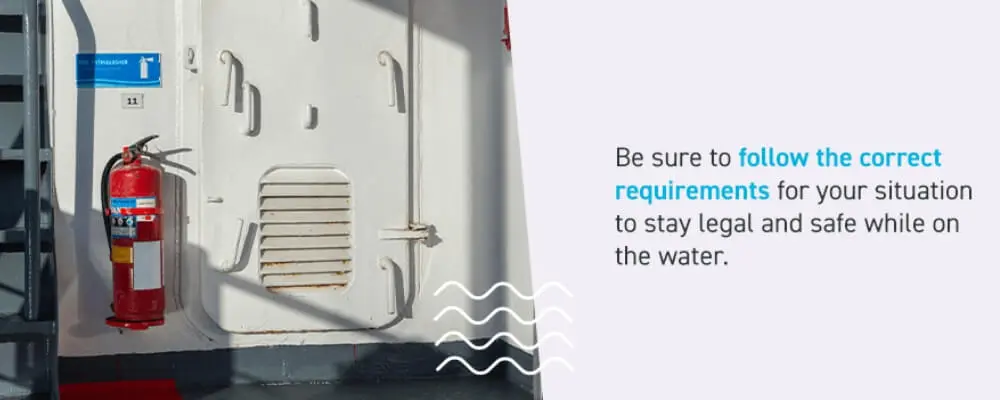
Requirements for Fire Extinguishers on Boats
Fire safety on the water is of paramount importance. With the challenges of isolation and the potential complications of water-based rescues, boats must be adequately equipped to handle fires. Understanding the fire extinguisher requirements for boats is crucial for both legal compliance and the safety of all onboard.
1. Boat Size
The size of a boat is a significant determinant in establishing the type and number of fire extinguishers required. Smaller boats, those less than 26 feet, generally need at least one B-I-type fire extinguisher. This is primarily because the limited space usually means fewer sources of potential fires. As boats increase in size, so do the risks and potential hazards. For vessels between 26 and 40 feet, having at least two B-I fire extinguishers or even one larger B-II fire extinguisher is recommended to account for the increased potential fire load.
The demands rise further for those sizable crafts between 40 and 65 feet, necessitating three B-I fire extinguishers or a combination of one B-I and one B-II. Such specifications are designed considering the intricacies and the expansive nature of larger boats, which might have more complex systems and spaces, hence a greater need for fire suppression resources.
2. Exemption
Some boats come equipped with built-in fire suppression systems. These systems, designed to detect and extinguish fires automatically or manually, can significantly reduce the risk of a fire spreading. Consequently, boats that have these systems integrated might be granted exemptions or reduced requirements for onboard fire extinguishers.
However, it’s essential to consult local regulations, as even with built-in systems, a minimum number of portable fire extinguishers may still be required.
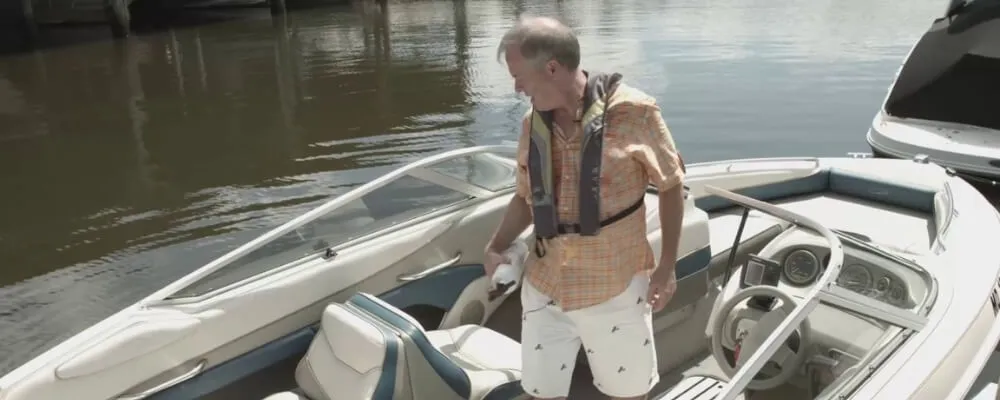
3. Maintenance
A fire extinguisher’s presence on a boat is only as good as its operational condition. Regular inspections are vital to ensuring they function when needed. Boat owners should check the pressure gauge to ensure the extinguisher is charged and ready for use. External checks for corrosion, leakage, or visible damage are also critical.
Furthermore, extinguishers have a shelf life, and even if they appear in good shape, they may need servicing or replacement after a certain number of years. Relying on an expired or damaged extinguisher in an emergency can have dire consequences.
4. Accessibility
Imagine a fire breaking out, and the extinguisher is buried beneath heaps of equipment or stashed away in an obscure corner. Such a situation can lead to panic and precious time lost. Therefore, fire extinguishers should be placed where they can be reached quickly. It’s also crucial for all passengers and crew to be aware of their locations.
Routine drills, although they might seem tedious, can be instrumental in familiarizing everyone on board with the locations of safety equipment, ensuring a timely response during emergencies.
In summary, boat fire safety amalgamates the right equipment, regular maintenance, and informed crew and passengers. It’s a comprehensive approach that ensures safety at sea, minimizing risks and ensuring swift action when faced with fire hazards.
Conclusion
In the vast expanse of the open sea or even within the confines of serene lakes, ensuring the safety of all on board is paramount. While the waves and winds command respect, so should the silent, potential threats lurking within your vessel. Fire extinguishers, often underestimated, stand as a boat’s primary line of defense against sudden and unexpected blazes. The requirements for these life-saving tools vary based on boat size and other specific criteria.
However, beyond mere compliance with regulations, understanding and respecting these requirements epitomizes a boat owner’s commitment to safety. Every time you set sail, ensuring your fire extinguishers are in place, accessible, and operational should be as routine as checking the weather or plotting your course. After all, it’s always better to be prepared for every event on the unpredictable waters. Safe sailing entails being equipped, aware, and always prioritizing safety above all else.

